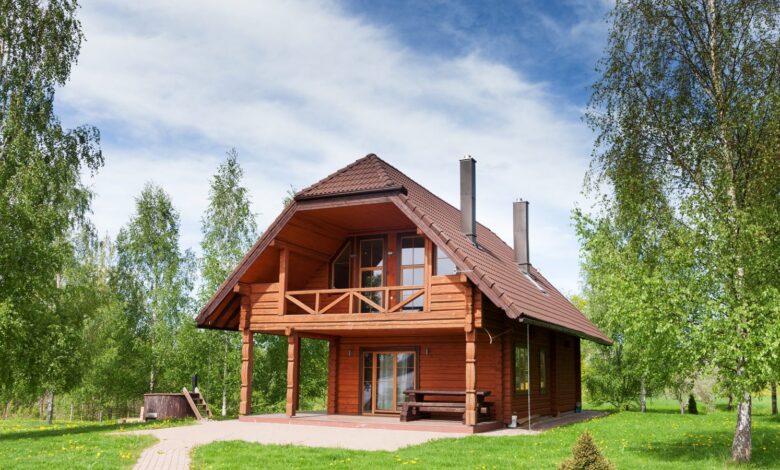Study Says Living In Timber Cities Could Avoid More Than 100 billion Tons of CO2 Emissions By 2100

[ad_1]
New analysis by the Potsdam Institute for Climate Impact Research (PIK) in Germany means that residing in timber cities might keep away from emissions.
The new research reveals that housing a rising inhabitants in properties made of wooden moderately than typical metal and concrete might forestall greater than 100 billion tonnes of emissions of greenhouse fuel CO2 till 2100. These signify about 10 per cent of the carbon price range nonetheless accessible for the two°C local weather goal.
For the availability of development wooden, newly established timber plantations are vital along with the harvest from pure forests. Even although this has no influence on meals manufacturing, the scientists warn that if the state of affairs is just not rigorously managed, biodiversity could endure.
The research is the primary to look at the consequences of a widespread swap to timber cities on land use, emissions associated to land use change, and long-term carbon sequestration in harvested wooden merchandise. It was printed within the journal – Nature Communications.
Lead writer for the research, Abhijeet Mishra, who can also be a scientist from the Potsdam Institute for Climate Impact Research (PIK), mentioned, “More than half the world’s population currently lives in cities, and by 2100 this number will increase significantly. This means more homes will be built with steel and concrete, most of which have a serious carbon footprint”.
“But we have an alternative: We can house the new urban population in mid-rise buildings – that is 4 to 12 stories – made out of wood,” added Abhijeet.
As bushes take CO2 from the ambiance to develop, wooden is recognised as a renewable useful resource with the bottom carbon footprint of any comparable constructing materials. Abhijeet explains, “Production of engineered wood releases much less CO2 than production of steel and cement. Engineered wood also stores carbon, making timber cities a unique long-term carbon sink – by 2100, this could save more than 100Gt of additional CO2 emissions, equivalent to 10 per cent of the remaining carbon budget for the 2°C target.”
The scientists examined 4 completely different land-use situations for the paper utilizing the open-source world land use allocation mannequin MAgPIE: one with conventional constructing supplies like cement and metal, and three with elevated demand for wooden on high of the usual demand for wooden. They additionally examined the sources of the extra excessive demand for picket constructing supplies and the potential results on each direct and oblique land-use-related carbon emissions.
Co-author of the research, Florian Humpenoder defined, “Our simulation shows that sufficient wood for new mid-rise urban buildings can be produced without major repercussion on food production.”
“Wood is sourced from timber plantations as well as natural forests. Most of the additional timber plantations needed – we are talking about roughly 140 million hectares – are established on harvested forest areas and thus not at the cost of agricultural land,” as Humpenoder underlines. “We need farmland to grow food for the people – using it to grow trees could potentially cause competition for the limited land resources.”
Increasing forest harvest ranges whereas defending essentially the most helpful forests
The results of changing pure ecosystems with timber plantations on biodiversity had been additionally examined by scientists. Alexander Popp, head of the land use administration group at PIK scientist and co-author of the research, defined: “The question of how and from where to source the wood for the construction of timber cities is crucial. In our computer simulations, we have set a clear limit to timber extraction and for adding new tree plantations: Nothing can be cut off in pristine forests and biodiversity conservation areas.”
In reality, Popp underlined, “The explicit safeguarding of these protected areas is key, but still, the establishment of timber plantations at the cost of other non-protected natural areas could thereby further increase a future loss of biodiversity.”.
Other analysis means that steps like switching to a vegetarian or vegan weight loss plan might assist unencumber land for meals and wooden manufacturing whereas preserving biodiversity.
Another writer of the research, John Schellnhuber mentioned, “The key challenge for global sustainability is the deep co-transformation of land use and construction. If carefully integrated, these two sectors can remove and store crucial amounts of carbon from the atmosphere without jeopardizing food security or biodiversity. This could become the climate solution we have been desperately looking for.”
Galina Churkina (one of the authors of the research) mentioned, “Increasing carbon storage in cities in parallel to land ecosystems is very important for this transition to succeed as a climate change mitigation strategy. Forests have to regrow after harvest and accumulate at least as much carbon as they stored before. The lifespan of timber buildings has to be at least as long as the time needed to repay `the carbon debt’ in harvested forests on a sustainable basis.”
Lastly, Abhijeet Mishra concluded: “Our study underlines that urban homes made out of wood could play a vital role in climate change mitigation due to their long-term carbon storage potential. Strong governance and careful planning are required to limit negative impacts on biodiversity and to ensure a sustainable transition to timber cities.”
[ad_2]




